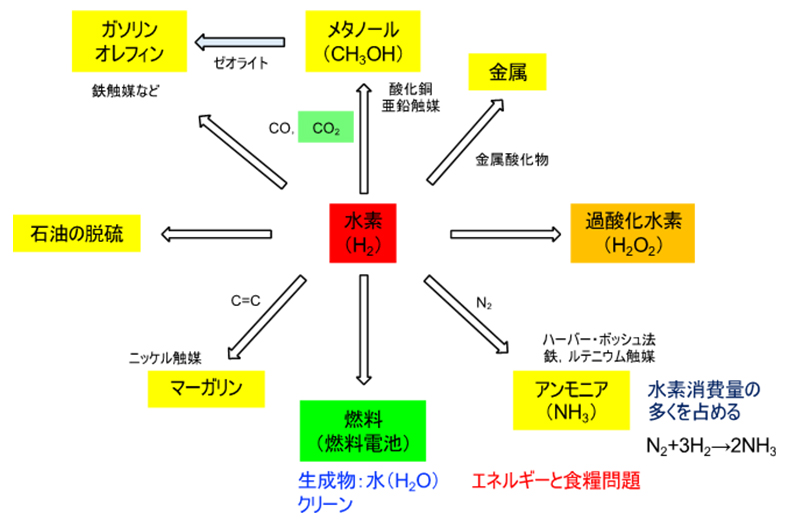Research outline
The chemical reaction that uses solar energy to produce hydrogen, alcohol, and olefins from water, carbon dioxide, and nitrogen can be called artificial photosynthesis (Fig. 1).
Artificial photosynthesis is a chemical reaction that can solve global resource, energy, and environmental problems. Furthermore, we can pioneer chemical synthesis processes that do not rely on fossil resources such as oil and natural gas. Power of chemistry is essential to the realization of artificial photosynthesis. The realization of artificial photosynthesis is eagerly awaited by society, and numerous national projects are running around the world. The realization of artificial photosynthesis will have a great impact on society. Against this background, the development of new photocatalysts capable of efficient artificial photosynthesis is a major theme in our laboratory.
To achieve this goal, it is essential to develop new functional inorganic compounds (photocatalysts) involving light and electrons. Therefore, we synthesize various inorganic compounds with interesting crystal structures to understand their electronic structures, and at the same time, investigate their photocatalytic activity and photoelectrochemical properties.

